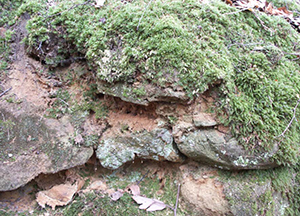 Once in this woodland there had been an important quarry, whose traces are difficult to find today. There the Luxembourg Sandstone had been worked for decencies. The gained stones were mainly used for construction purposes. Many buildings are built with the stones of this quarry, like for example the church of Niederanven. Working the sandstones had been for a long time an important economic factor of the community. Many citizens found a job at that quarry.
Once in this woodland there had been an important quarry, whose traces are difficult to find today. There the Luxembourg Sandstone had been worked for decencies. The gained stones were mainly used for construction purposes. Many buildings are built with the stones of this quarry, like for example the church of Niederanven. Working the sandstones had been for a long time an important economic factor of the community. Many citizens found a job at that quarry.
This quarry in the woods had only been one of many in Senningerberg. Other big quarries could be found in “Gromscheed” or “Brédewues” for example.
The development of the quarries after their closure
After their closure the many quarries developed differently. As the “Gromscheed” quarry was lying very close to the centre of Senningerberg, it has been used to construct private houses. The old quarry “Brédewues” is used today for stone conditioning.
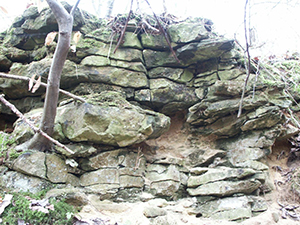
When fine soil is filling the rock cracks different trees species with a pioneer character, like for example the birch or the goat willow can quickly spread.
The quarry in the woods however had no use any longer because of its situation far from the houses and the difficult ground conditions. The local Centre forestier uses the southern part of the quarry for storage.
The quarry as a biotope for fauna and flora.
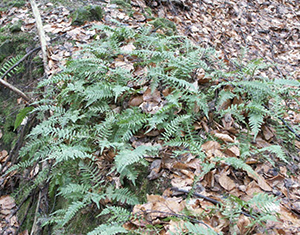
Ferns, bryophytes and lichens are the first to cover the nude rocks and the small rock cracks.
The quarries with their nude rocks, rubbish dumps and rocky surfaces are representing a special biotope, created by men. Natural formed rock formations are very seldom in Luxembourg and the artificially ones of these quarries often represent the only living space for typical animal and vegetation species.
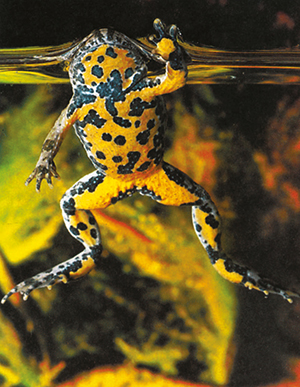
The yellow bellied toad finds its living space in small pools.
The natural characteristics there did change with the years and the sunny side nude rocks did attract those species, specialised in supporting important temperature and light fluctuations. Insects and lizards, adapting their body temperature to the outer environment, did start to populate the site and little ponds and pools became a vital space for rare amphibians as for example the Midwife toad or the yellow bellied toad.
Because its situation in the middle of the wood, the vital conditions are of a high humidity and freshness, where only special adapted species can live.
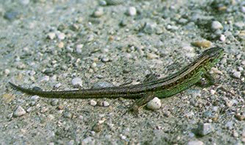
Rocks and walls are representing the living space of the Sand Lizard.
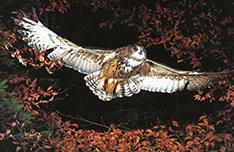
The Eurasian Eagle Owl normally nests in large cliff edges or rocky areas.
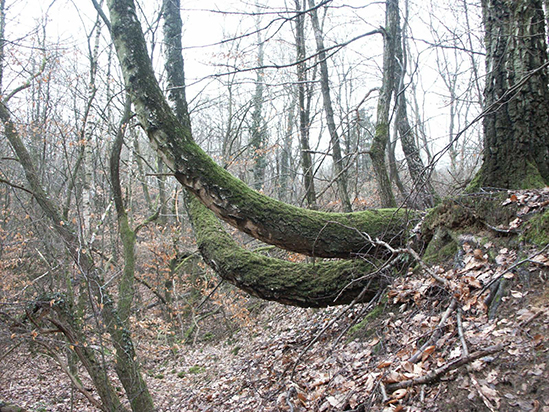
A natural characteristic for rock formations is the fact that young trees are all bending to one side. At age however they continue to grow vertically, so that they all show later on the typical bended trunk form.
